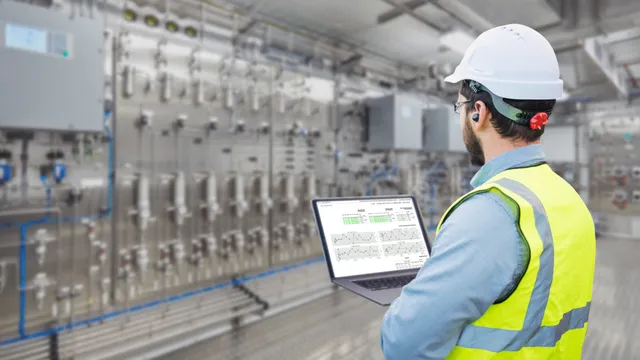The history of Tunning Ingeniería has gone hand in hand with the development of the place where they carry out all the necessary tests to prepare their interventions before going into the field, reducing time, costs, and risks in the automation of industrial processes.
Since Tunning Ingeniería was founded more than thirty years ago, it has created a testing laboratory that is set up to test the logic and configurations of each project, according to their specificities. “It has existed since the company’s inception and has grown along with its history and needs, accompanying each of its business units,” says César Monagas, Head of Software Development and Control Systems at Tunning.
Monagas highlights the control systems laboratory, which includes a Programmable Logic Controller (or PLC) for different brands and models, allowing it to cover a wide range of industrial communication protocols, devices, motor drives, and actuators in general.
“Along with the digitization of the industry, Tunning’s laboratory has evolved into what we now call the Hybrid Laboratory, consisting of physical equipment and software tools that enable the virtualization of control elements that make the use of additional resources for testing in a controlled environment more flexible,” César points out.
Smart Grid
To meet the current needs of the Industry 4.0 electrical sector, Tunning is developing a Smart Grid Laboratory, including a set of equipment ranging from electrical protection devices to control bays, remote terminal units (RTUs), and level 1, 2, and 3 SCADA systems.
Cutting-edge equipment
The testing laboratory has allowed Tunning Ingeniería to develop extensive expertise and build equipment that is up to date with the latest technological developments and the needs of the industries they serve. At the same time, this has fostered the training of new professionals over several generations, which is a guarantee of quality for their customers. “Thanks to the preparation and reliability of the tests carried out in the laboratory, we deliver a world-class service,” says Monagas.
Thus, technical groups of engineers and senior technicians in the areas of automation, control, instrumentation, and electricity join Tunning with a basic knowledge of how to use tools for measuring voltage, current, instrumentation, or milliamperes.
“Then, they receive training in the laboratory on the specific use of control equipment, for example, to learn how a digital input and output card works, an analog input card, what voltage or current levels it should have, how to use a loop calibrator to see if instruments are working or not, among other things,” says César.
In this way, the Tunning Ingeniería testing laboratory allows us to set up all the necessary infrastructure to prepare the interventions for each project before taking it to the field. “The main benefit is that it optimizes time, costs, and the risk of accidents or failures,” concludes Monagas.








